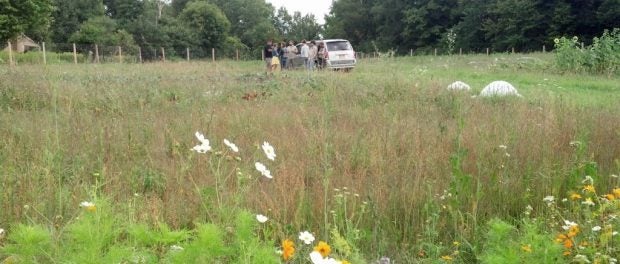Invasive Species on the Farm

Weeds and Invasive Species on the Farm – Thinking About Sustainable Management
Guest post by George Lindemann of Coal Creek Farm
Do you have foreign or invasive species on your farm? Do you have a weed problem? Managing these challenges is complex. There are no hard and fast answers. Take Tall Fescue grass, for example. Fescue is a cool-season grass that is not native to my Cumberland County, TN farm. Yet it carpets many of our cattle enclosures. And we take good care of it. Cattle farmers do not consider Fescue an invasive species, yet it actually comes from Europe. It has become an integral part of the farm economy, so it is here to stay despite it being foreign. Mimosa trees are invasive. They do not feed our cows, and so, when we encounter one, we remove it. Same for Tree of Heaven. We remove all of them. These and other species might seem attractive to the eye, but they are dangerous. History has proven so. In Florida, Melaleuca and Australian Pine are hardy water-sucking plants imported from overseas to drain wetlands. Today wetlands are considered a crucial part of the ecosystem. Floridians are actively removing invasive trees that drink too much and destroy the environment.
With a few exceptions, such as Fescue grass, the safest action with weeds and invasive species on the farm is to keep them off your farm and systematically remove those currently on your property. It might take time, even years. But it will be better for farm productivity as well as for the environment.
Some undesirable trees are native but considered weeds, just like the dreaded weeds in a garden. Black Locust is a tree native to Cumberland County, yet we are removing them. It wasn’t always that way. When we first established our cattle farm on land that had been clear cut, many areas were barren. Locust was the only tree that would grow on that damaged land. Black Locust thrives in open, sunny areas. We let the Locust grow to keep the topsoil from eroding in areas denuded by tree cover. Ten years later, grass and other trees have reemerged. When there were no other options, we tolerated the Locust. Now the Locust is spreading unnaturally. Even though the tree is native, it is not supposed to grow so abundantly. And so, most are systematically being removed. It’s not easy. The expression “spread like a locust” is real. When you cut one down, one hundred baby Locust sprout up. As much as I don’t want to, we are applying a chemical to the Locust stumps. A local biologist recommended Basel Bark. We try to avoid using chemicals on our property, but sometimes we must.
Farmers have to balance the benefits and impacts of all the plant species growing on a farm. Invasive species are usually harmful and better when swiftly removed before they damage profits or ecology. Black Locust removal is a thorny question. (Pun intended as locust trees have thorns which are pointy enough to pop a car tire.) I like my farm to look as natural as possible. It’s suitable for both wild and domesticated animals. Even though Black Locust is native to the Cumberland County, TN area, it took clearcutting to make it seem invasive. Still, we must control it.
Each geographic region is different, so it’s best to contact the local farm extension to learn about local weeds and invasive species on the farm. They will be happy to walk a farmer through species considered foreign, invasive, or even native species taking an unintended place in the system. At Coal Creek Farm, the goal is to return the land to as natural a state as possible. We believe it will also ensure a productive and profitable farm.
-
Other guest posts from George Lindemann include Controlled Burns on the Farm, The Farm Watering Hole, and Using Gravel on Farm Roads.
-
Find tons of other great farming resources here.








 Your Privacy Choices
Your Privacy Choices
Leave a comment